The Irrepressible Spirit of Vassar
The Spirit of Vassar Award is given to an individual or group whose volunteer efforts exemplify an enduring spirit of community and caring. This year, the Alumnae and Alumni of Vassar College (AAVC) honored the living former presidents of AAVC for their contributions to society and to Vassar. We take a look back at their terms as president, which share a common theme: advancing the best interests of Vassar and its alumnae/i community.
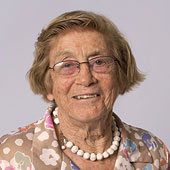
Taft was a member of the first class of WAVES headed into WWII fresh out of Vassar, and later made her career as an art history educator at the Cleveland Institute of Art. Taft’s AAVC presidency was dominated by the looming question of coeducation. When word leaked of a possible merger with Yale, “the alumnae reaction was swift and negative. You could feel the vibrations from all over the country,” Taft remembers. “I was determined to keep Vassar alive and independent.” This despite also having strong ties to Yale; her father, grandfather, husband, grandchildren—six generations in all—attended Yale, and Taft got her master’s from there.
In lieu of a merger, Taft urged Vassar to go coed, and “wrote numerous letters to all alums speaking of progress,” she says. “Everything worked out … it was a wise decision at that moment in educational history.”
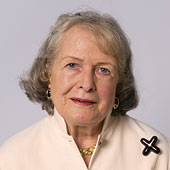
Vassar had just gone coed when Watters took the AAVC helm. It was “a difficult period,” she recalls. A certain percentage of the alumnae weren’t happy about the change. But coeducation was nothing new for Watters. As a drama major, she’d taken classes alongside the Vassar Veterans. Watters—whose professional and volunteer lives spanned careers in religious education, theater, and cultural advocacy—reached out to alums. “I wanted them to see that we hadn’t really changed all that much,” she says. Besides, her son had been one of the men who enrolled in that first coed class—a decision that offered her insight into the new Vassar.
Watters’s presidency was also a time of another transition—that of the Alumnae Fund, established in 1932, into the Annual Fund. Watters was sensitive to what she called the “we, they, it syndrome,” referring to the college, AAVC, and the fund. Seeing an unnecessary duplication of efforts, and perceiving no threat to AAVC’s independence, she successfully lobbied to have the Alumnae Fund become the college’s Annual Fund, housed in the Development Office, to eliminate overlap and competition between alumnae/i and college fundraising.
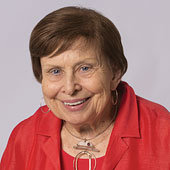
As an editor, writer, community leader, and supporter of education-focused nonprofits, Langan was used to having a voice, and having that voice heard. It came as no surprise, then, that her term ushered in the new “norm” of the AAVC president joining the college’s Board of Trustees.
Langan explains: “I, along with the president of the VSA (Vassar Student Association), was an observer to the Board rather than a member of it. There had been alumnae trustees on the board since 1887, but the president of AAVC did not serve in any capacity until a recommendation for observer status was made and adopted in 1976. Observer status meant I was to watch and listen, but not participate in the discussion unless asked a question.” But it would only be a matter of time before one of Langan’s successors would see the AAVC president take on heightened importance among the college trustees.

The AAVC presidency of Hess, herself a teacher and educational administrator, straddled the college presidencies of Virginia Smith and Frances Fergusson. The continuity Hess provided proved especially important.
“During my four years as president, very significant strides were made in strengthening and harmonizing the relations between AAVC and the college. We tried very hard to build sturdy two-way ‘bridges’ across Raymond Avenue. We also worked relentlessly to persuade reluctant alumnae from the pre-coeducational era that the coeducational Vassar of the 1980s was still in essence the Vassar they knew and loved and was the right answer for our time.”
Another accomplishment of her presidency was the revival of the alumnae/i parade, a tradition that had fallen by the wayside during World War II. “This brought the pre-coeducational alumnae and those from the coed era together in a very meaningful way,” says Hess.

Gaines, a powerful force in education at both the high school and college levels, continued the strides of her predecessors. She began to clarify the duties of an AAVC president, who would also formally sit on the college’s Board of Trustees. She strengthened the classes, clubs, and affiliate groups under the AAVC banner. And she served as both the first African American AAVC president and the only AAVC president to serve alongside an executive director who was also a classmate (Mary Meeker Gesek ’58).
Most of all, Gaines remembers the written agreement signed by both her and President Fergusson, on behalf of AAVC and the college, to work together on a reenvisioned Alumnae House. “The fact that all of the staff that support alumnae and alumni now all work together in the building, finally expanding the campus across that part of Raymond Avenue, that it remains a beautiful college asset, a welcoming place for alums and visitors alike, makes the house a permanent, visible example of what alumnae/i can accomplish in partnership with the college,” she says.
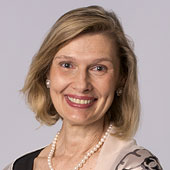
A decade and a half after Langan first joined the college trustees as an observer, Kjelleren—who spent a long career in private banking and international corporate finance—became a sitting member of the college Board of Trustees and a member of its Executive Committee. To accommodate the change, AAVC rewrote its bylaws to designate one of its alumnae/i trustee slots to the AAVC president. It was a crucial change that brought AAVC’s leadership into closer relationship with the college’s.
“It was absolutely key to virtually everything we were able to do,” Kjelleren says. “Being a sitting member of the Board, and sitting on the executive committee, really gave me an excellent view of what the college was trying to accomplish in every phase of its development, and allowed me to therefore lead the association to be in full concert with the college.” Since then, Kjelleren has spent more than a decade helping nonprofits improve their organizational leadership.
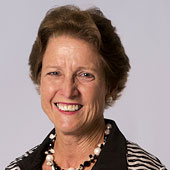
Under the leadership of Bledsoe, AAVC embarked on its first major comprehensive strategic planning effort. “Strategic planning was one thing we did, and we did it well,” Bledsoe says. “We needed a plan, and then budgeting based on that plan, so that we had some kind of measurement of where we were going and what we were doing.”
Bledsoe notes that she was usually the treasurer of organizations with which she worked. “I think in terms of numbers, of finance and budget,” she says. That’s no surprise, given her decades-long career in financial services (and later education, youth, and the environment). The result was a more focused direction for AAVC, whose mission—as ever—remained solidly focused on the college and the alumnae/i community.
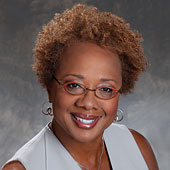
When Madison was asked to join the Presidential Search Committee tasked with naming Vassar’s 10th president, she knew it was an important time. “It felt to me like a really monumental move, to make such a change in an academic institution that has such a distinct character and brand,” Madison says. Catharine “Cappy” Hill emerged as the early front-runner. Her academic focus on the access of low-income students to highly selective colleges struck a chord with Madison. “I am one of the students who would have been in that group,” says the Harlem-raised daughter of Jamaican immigrants. Madison also recalls how, during her time as AAVC president, she was one of five African Americans on Vassar’s Board of Trustees. “We brought an awareness and sensitivity to [what it was like to be a] black student and black alum at Vassar,” she explains.
The promotion of racial diversity and cultural sensitivity were hallmarks of Madison’s career as well. As the executive vice president and chief diversity officer at NBC Universal through most of the 2000s, she became an industry leader in developing programs that better reflected global audiences.
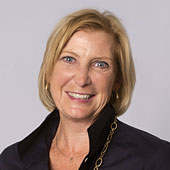
Johnson became president of AAVC just as Catharine Hill assumed the presidency of the college. The two formed a close partnership that paved the way for the creation of the Office of Alumnae/i Affairs and Development, which officially took shape in 2010. “This was the biggest challenge of my presidency, to be sure,” says Johnson, whose experience as a communications professional and education consultant surely benefited her as AAVC president during this time.
“It was the right moment to think about AAVC in a new way,” she recalls. “It was a time of tremendous economic uncertainty for the college, and everyone who loved Vassar had to look closely at his or her responsibility for the financial equilibrium of the institution and the priorities we all felt were important. Alumnae and alumni are Vassar’s institutional memory and her permanent constituency … [they] have the most enduring connection to the college and are, in many ways, the largest stakeholders in Vassar’s continued excellence. The question became, how do we work in a new way with the college?”As ever, Johnson says, that question has been answered through the work of “a really diligent, passionate staff and some amazing volunteers who were tremendously giving of their time, enthusiasm and skills.”
